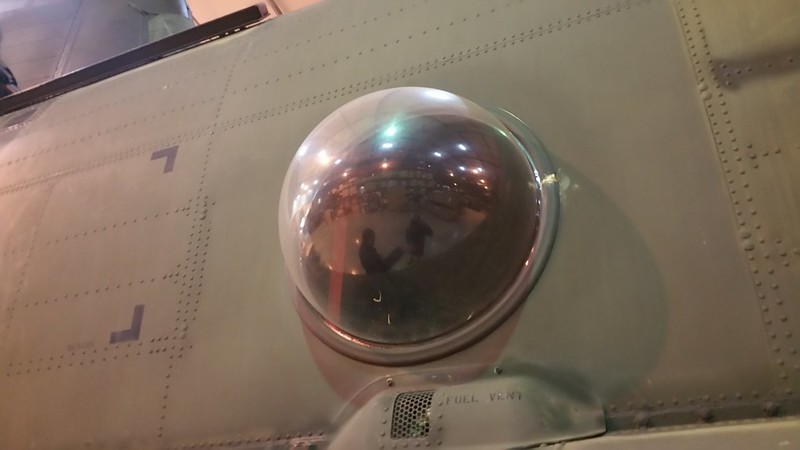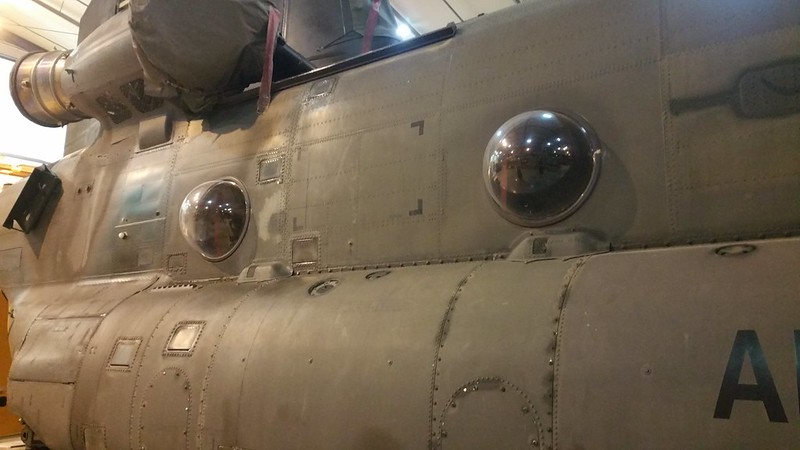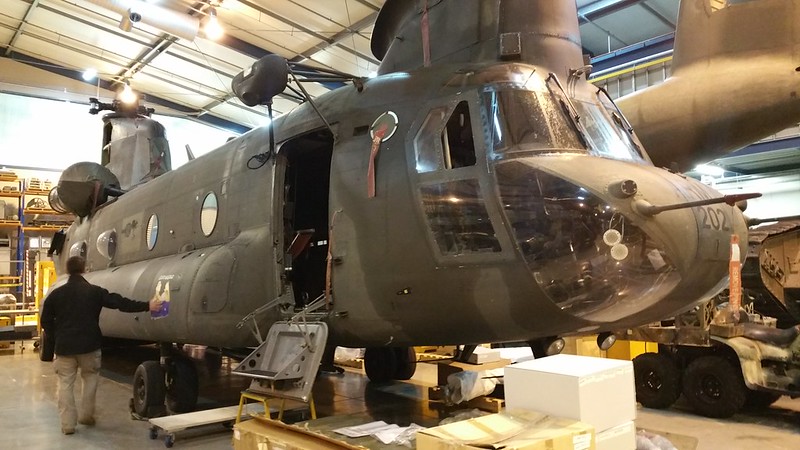

Recently, whilst on a visit to the Australian War Memorial's storage facility in Mitchell, I had the opportunity to get up close with one of the Boeing CH47 Chinooks, or "chooks" to the Australians. The Chinook is surely also a familiar plane to most Singaporeans as two chinooks are used every year to fly the Singapore Flag during the National Anthem on the televised National Day Parade. I was admiring the round windows when I was told they were made of.... plastic! A hollow tap confirmed it! I was surprised to see that the window were all made of something akin to Perspex! Well, I said Perspex, but then being unsure of what the Australians called acrylic glass here, I felt obliged to rattle off a series of possible plastic names! Perspex? Plexiglas? Acrylic sheet? Polymethyl methacrylate?? Perspex?! What do you call it!
Later in the week the question of where perspex got its name from came up again in a random conversation. Indeed, Perspex is such a wonderful name when you think of it - it reminds us of perspective, or spectacles, and has the futuristic letter X at the end! So why don't we use the term "perspex" as often these days to refer to acrylic glass?.... so I duly went and googled it.
It turns out that "Perspex" itself is a registered trademark of the British company Imperial Chemical Industries (The "ICI" of popular Dulux paints), which is possibly why the use of the term may have fallen out of fashion - since the use of the trademarked term "perspex" would have its legal constraints. However, in America the same type of acrylic glass (Polymethyl methacrylate) product is sold as "Plexiglas", which has also been trademarked and produced by another company.
Running the words through Google Ngram viewer (which allows you to compare the 'yearly count' of any Ngrams/words/phrases from the Google text corpus of 1500-2008), this confirms that in British English "perspex" is by far the most commonly used word, but in American English then it is more popular to call it "plexiglas"!
British English
graphing the terms: perspex,plexiglass,plexiglas,lucite,acrylic glassAmerican English
graphing the terms: perspex,plexiglass,plexiglas,lucite,acrylic glassYou'll notice that interestingly for the American English ngram chart, "lucite" is revealed to have been the most popular term once upon a time, peaking in 1951.
Lucite is the trademarked term by the American company DuPont - which does a lot of material science development and also developed neoprene, nylon, teflon, mylar, kevlar, kapton, tyvek, lycra, and even Freon (the CFCs used in fridges).
If we had to trace the origin of Polymethylmethacrylate/PMMA/lucite/plexiglas/perpex, they were first used on a large scale in WWII for military applications such as aircraft windshields and submarine periscopes - in both the Allied and Axis sides! Wartime contracts boosted the R&D of new plastics. Materials like PMMA was lightweight, durable, and resistant to wind, water, and UV rays. Another consideration was that flying shards of PMMA (as opposed to flying glass shards!) was less likely to blind or cause serious eye injuries to airplane pilots.
And in the postwar period, the task for all these companies producing acrylic glass were to find everyday uses through which these plastics could be marketed to the wider consumer market...

Today the Chinook's windows are made with another proprietary special aerospace acrylic glass that is made to withstand bird-impact and ballistic impact.
No comments:
Post a Comment